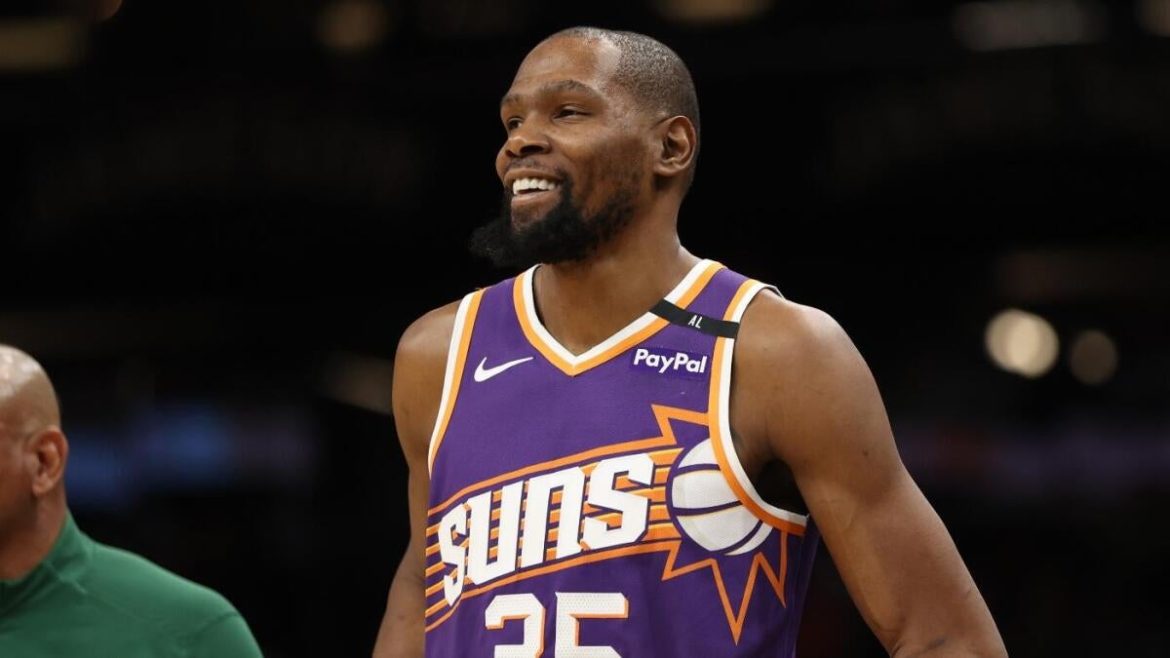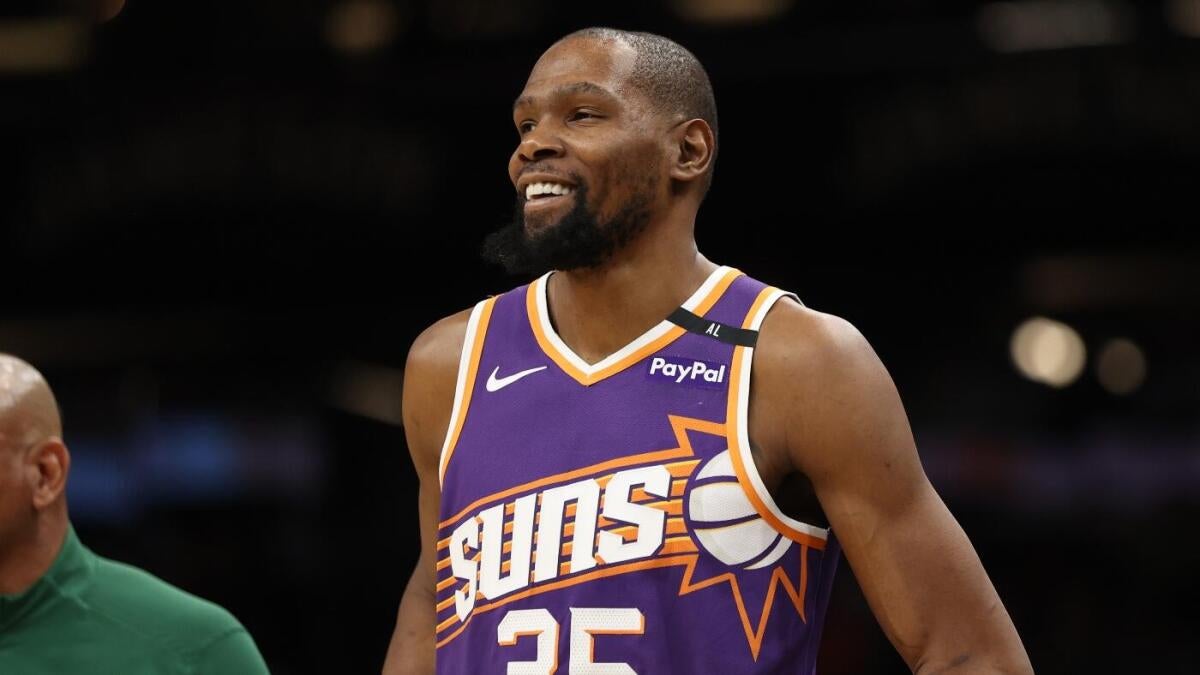The NBA has long been a league defined by its dynamic roster moves, but the rumored seven-team trade involving Kevin Durant stands out as a potential paradigm shift in how teams approach player transactions. This proposed deal, which would send Durant from the Phoenix Suns to the Houston Rockets, has evolved from a simple two-team exchange into a complex, multi-faceted negotiation involving several franchises. The implications of such a trade extend beyond the immediate roster changes, touching on salary cap management, team-building strategies, and the broader competitive balance of the league.
The Genesis of a Mega-Deal: Beyond a Simple Trade
The initial reports of a Durant-to-Houston trade were already significant, given Durant’s status as one of the league’s premier players. The Suns, after a disappointing playoff exit, appeared to be pivoting toward a youth movement, trading Durant for young talent like Jalen Green and Dillon Brooks, along with draft picks. However, the decision to expand the trade to seven teams introduces a new layer of complexity. Several factors likely contributed to this expansion.
Firstly, involving more teams allows both the Suns and Rockets to maximize their returns. By incorporating additional teams, the Suns can acquire specific role players or draft assets that better align with their long-term vision. The Rockets, meanwhile, can offload unwanted contracts or acquire future assets to bolster their rebuild. This multi-team approach creates a more flexible marketplace, where teams can trade for specific needs rather than settling for a one-size-fits-all solution.
Secondly, the NBA’s salary cap and luxury tax rules make it difficult to execute straightforward trades involving max-contract players like Durant. A seven-team trade allows for the distribution of salaries across multiple rosters, making the financial aspects of the deal more manageable. For example, the Suns might need to absorb a contract from another team to balance the books, while the Rockets could offload a salary to stay under the luxury tax threshold. This financial maneuvering is crucial in an era where teams must carefully navigate the league’s financial constraints.
Finally, the expanded trade allows teams to target specific players or draft picks that may not be directly available from the Suns or Rockets. For instance, the Los Angeles Lakers, rumored to be involved, could be looking to acquire depth or shed contracts to improve their championship window. The Atlanta Hawks, another team linked to the deal, might be seeking to offload salary or acquire a player who fits their timeline. This multi-team structure creates a domino effect, where each team’s needs and objectives influence the final outcome.
Potential Players: Piecing Together the Puzzle
While the exact details of the trade remain speculative, several teams have been mentioned in connection with the negotiations. Understanding their potential roles provides insight into how the deal might unfold.
The Los Angeles Lakers, for example, could be looking to add depth or shed contracts to improve their championship chances. They have been rumored to be willing to trade young players or draft picks to bolster their roster. Their involvement could help the Rockets acquire additional assets or role players, while also allowing the Lakers to address their own needs.
The Atlanta Hawks, another team linked to the deal, might be seeking to offload salary or acquire a player who fits their timeline. They have valuable assets, such as draft picks or young players, that could be attractive to other teams involved. Their participation could help balance the financial aspects of the trade while also addressing their roster needs.
The Brooklyn Nets, who previously traded for Durant with championship aspirations, could be involved in a deal that sends him to another team. Their involvement would likely focus on acquiring young talent and draft picks to accelerate their rebuilding process. One report suggested the Nets could land Terance Mann and a draft pick in a trade with Atlanta as part of the larger deal.
The Golden State Warriors, Durant’s former team, could be seeking to acquire specific role players or draft picks to extend their championship window. Their involvement adds an intriguing layer to the negotiations, as Durant’s history with the Warriors could influence the dynamics of the trade.
The Minnesota Timberwolves, though less frequently mentioned, could serve as a facilitator, helping to balance salaries or acquire specific players that fit their roster needs. Their involvement could be crucial in ensuring the financial aspects of the trade align with the NBA’s rules.
Implications for the League: A New Era of Trades?
If this seven-team trade comes to fruition, it could have far-reaching implications for the NBA. It would not only reshape the competitive landscape but also set a new precedent for how teams approach roster construction.
The success of this mega-deal could encourage other teams to explore similarly complex trades in the future. The willingness to involve multiple teams opens up a wider range of possibilities for acquiring talent and addressing roster weaknesses. It could lead to a more fluid and dynamic trade market, where teams are more willing to collaborate to achieve their individual goals.
However, such complex trades also come with inherent risks. Coordinating the needs and objectives of seven different teams requires careful negotiation and a willingness to compromise. There is also the potential for unforeseen consequences, as the ripple effects of the trade can be difficult to predict. Furthermore, integrating a large number of new players into a team can disrupt chemistry and take time to gel.
Ultimately, the success of this proposed trade will depend on the ability of all parties involved to effectively manage these challenges. If the teams can successfully navigate the complexities of a seven-team deal, it could usher in a new era of creativity and collaboration in NBA roster construction.
The Final Buzzer: A Defining Moment for the NBA
The potential trade sending Kevin Durant to the Houston Rockets, expanded to include a record-breaking seven teams, represents more than just a simple player transaction. It’s a testament to the evolving landscape of the NBA, where teams are increasingly willing to explore innovative and complex strategies to achieve their goals. While the ultimate outcome remains uncertain, the mere possibility of such a mega-deal underscores the dynamic nature of the league and the relentless pursuit of competitive advantage.
If completed, this trade could redefine how teams approach roster construction, ushering in an era of unprecedented collaboration and creativity in the pursuit of championship glory. Only time will tell if this deal becomes a blueprint for future transactions or a cautionary tale of the challenges inherent in orchestrating such a complex undertaking. Regardless, the NBA’s willingness to explore such ambitious trades signals a league that is constantly evolving, where the pursuit of excellence drives innovation and reshapes the very fabric of the game.





